Summary of Maria Helena Vieira da Silva
In spite of the fact she spent nearly her entire adult life living and working outside her country of birth, Vieira da Silva is today considered one of Portugal's most important female artists. Her paintings earned her international recognition for the artful way she blurred the lines between abstraction and representation. Often working with a restricted palette, she demonstrated a sharp sense of rhythmic grid-like patterning that showcased her knack for manipulating viewer perspective. A key member of Paris's post-war art community, her art reflected the depressive mood that descended on Europe in the immediate post-war years. But her mature period is notable for works that showed a growing optimism, which she demonstrated through her shift towards softer color schemes. In 1966 the French government awarded Vieira da Silva its Grand Prix National des Arts award, making her the first woman to receive the honor.
Accomplishments
- Vieira da Silva developed a unique approach to depicting space through semi-abstract compositions. Influenced initially by the art of Paul Cézanne, and the fragmentation and restricted palettes of Cubism, she earned praise for the labyrinthine quality of her art, and the way in which she experimented with ideas of perspective. Indeed, she proved adept at luring the viewers' gaze into different areas within her canvas.
- Vieira da Silva was an important figure in the expressive abstract movements that thrived in Paris in the immediate post-war years, and into the 1950s. Her name has thus become synonymous with the idea of Art Informel. It is true that she incorporated some of the gestural techniques associated with New York's Abstract Expressionist movement. However, Art Informel was not so much a movement, but rather a label given to an international affiliation of free-thinking artists who, in the words of Michel Tapié, were "much rarer, authentic individuals".
- Vieira da Silva once stated that she delighted in painting laughter and fear. In the former, her "patchwork" pieces carried childhood memories of life in Lisbon and allusions to the cobbled pavements and the glazed colored azulejos tiles that beautified many of the city's buildings. In the latter, her subject matter is much more challenging with fragmented ariel views of cities that had been burned and flooded through war.
- While primarily a painter, Vieira da Silva dabbled, with great success, in other mediums including textile design, book illustration, stained-glass design, and ceramics. Her most impressive of these "side projects" were the eight stained glass windows she designed for Reims Cathedral (France), and ceramic designs that adorn Lisbon's metro system.
The Life of Maria Helena Vieira da Silva
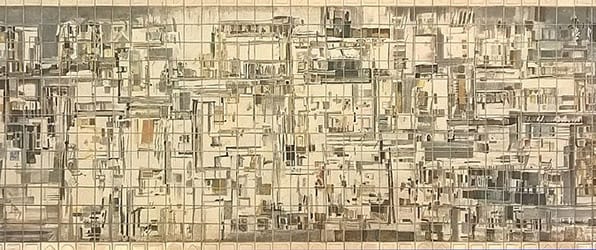
In 2020, the Galerie Jeanne Bucher Jaeger, Paris said of Maria Helena Vieira da Silva, "In today's world defined by ever-accelerating speed and fluctuation, Vieira da Silva's works remain relevant and contemporary for their evocation of a shifting and mesmerizing reality".
Important Art by Maria Helena Vieira da Silva
Composition
In her early years in Paris, Vieira da Silva often attended meetings of a group of artists, writers, and intellectuals who called themselves "Amis de Monde" (friends of the world), run by novelist and French Communist Party member Henri Barbusse. A common topic of discussion was the pros and cons abstraction vs figuration. It was during this time that Vieira da Silva produced this work. It was one of her earliest experiments with abstraction, and it anticipates her later focus on abstracted depictions of urban spaces.
Composition contains several loosely-defined rectangles of color and patterns (checkerboard patterns and stripes), which are meant to represent urban structures and surfaces. For instance, the areas of checkerboard pattern refer to the Azulejo tile patterns found on the walls and cobbled streets/walkways of Lisbon, Portugal. The artist was an avid collector of these tiles, and her collection included examples from as early as the fifteenth century. Although still only in her late twenties when she produced this work, Vieira da Silva had already begun to develop what was to become her signature aesthetic.
The art historian, Anne Lemonnier, writes "The places and objects of her childhood populate an inner world brought to life in her pictorial art: libraries and theatres, musical scores and chess games, alleys tiled with azulejos and the ornamental ironwork of Parisian architecture. Whether her paintings begin as a still life, empty room, or bustling metropolis, the canvas takes on labyrinthine qualities: a network in the shape of a spider web, a warped checker board, where the eye wanders, gets lost, goes dim or becomes illuminated. This network, which can be understood as a metaphor for reflection, is fundamentally an exploration of perception".
Oil on canvas - Art Institute of Chicago
Echiquier Rouge ou Joueurs d'Échecs (Red Chessboard or Chess Players)
This painting, inspired by Cézanne's Card Players (1894-95), and, perhaps even more so, by Marcel Duchamp's Les Joueurs d'Échecs (1911), was produced near the end of Vieira da Silva's exile in Brazil. It is a Cubist depiction of two chess players. The entire composition is covered by a chessboard pattern, from which these figures, as well as a number of chess pieces (such as a knight and pawns near the center of the image) emerge. The palette is comprised of deep reds, browns, and blacks, with some yellow and orange throughout. The players are rendered in lighter shades, helping them to stand out against the background. The artist herself said of the work "The reason why I used those little squares and that wobbly perspective [...] was because I didn't see the point in following Mondrian or anyone else. I wanted to do something different. I wanted people not to be passive. I wanted them to come and take part in the games, to walk, to move up and down".
Christie's auction house said of this work that it "locks the viewer's gaze in a captivating chromatic chequerboard. The eye discovers the silhouettes of two players locked in a duel, fixed and entangled in a composition in which the chequerboards stretch off into infinity. [...] She creates multiple vanishing points. The eye thus relentlessly scours each and every dynamic centimetre of the painting, finding neither an entrance nor an exit: the painting is a maze of infinitely vast and unsolvable labyrinths. For Vieira da Silva, losing herself in space became a way of understanding the fantastic complexity of the world. The vibrant and complex Échiquier rouge is an irresistible invitation to enter her reality".
La Partie D'Echecs was one of the first works by Vieira da Silva to be purchased by the French government shortly after her return to France in 1947. This was, however, not Vieira da Silva's first painting on the subject of chess players. Her La Partie d'Échecs (The Chess Game) from 1943 is an even more dizzying composition focused on a pair of chess players. In that work, the figures' faces, and the table and chessboard on which they play, are more clearly defined, and stand out more from the almost surrealist checkerboard landscape in which they are presented from a more elevated perspective.
Oil on canvas laid down on board - Private collection
The Corridor
This abstracted work was created by Vieira da Silva shortly after her return to Paris after World War II. It appears to depict what curator Judith Wilkinson describes as "a claustrophobic grey interior of a room or corridor with a low ceiling, close walls and a sharp vanishing point, to which the eye is led by multiple conflicting perspectival lines" and is dominated by "a dizzying mosaic of small geometric tiles," in square, rectangular, diamond-shaped, and triangular forms. Wilkinson explains that Vieira da Silva initially outlined the composition with thin, black lines and then painted in the geometric shapes, before then modulating "the internal structural walls using a technique called scumbling - a process by which painters soften the hard lines in their works by applying an opaque layer of paint against a straight edge using a semi-circular motion and an almost dry paint brush". In this way, "The opacity of the painted tiles juxtaposed against the thin wash of the modulated bars and walls creates a shimmering effect within the painting".
This work, and others produced by Vieira da Silva in the same period (such as Paris (1951)), are heavily indebted to Paul Cézanne, both in terms of its exploration of perspective, and in their use of color. Art historian Gisela Rosenthal explains that "It was Cézanne who attracted the young artist most strongly. In his paintings he had attempted to make the structures underlying the visible reality, and found new ways of representing space". Vieira da Silva herself stated "Perspective captivated me [...] To succeed in encapsulating a whole space on a small piece of canvas! But that is at odds with the rules of pictorial representation and the laws of a certain age". Moreover, though from afar The Corridor appears to be executed almost entirely in white, grey, and black, closer inspection reveals that the artist blended small amounts of violet, blue, green, yellow, and red (Cézanne's preferred palette) into her white and black paint, making the work more dynamic. Belgian writer Léon Kochnitzky described The Corridor as "existential" and "anguished". Indeed, like many artists in the immediate post-war period, Vieira da Silva's work indicates her troubled mental state, as she sought to make sense of a world seemingly in ruins.
Oil on canvas - The Tate, London, England
L'Inondation (The Flood)
In this work, Vieira da Silva presents a messy conglomeration of black linear forms that appear like broken ladders laying horizontally. The composition is mostly white, with sparse strokes of blue, red, green, and yellow overtop some of the black lines. The title of the work, The Flood, offers a means of interpreting the image as a cityscape after heavy rain and flooding, with the black forms representing buildings and other structures (perhaps bridges) emerging from the water.
Vieira da Silva's works, especially those from the immediate post-war period, can be classified as Art Informel, a term coined by French art critic and curator Michel Tapié. Art Informel groups together several loosely-affiliated artists (such as Italian Alberto Burri, French artist Jean Dubuffet, and Danish artist Asger Jorn) who, though working in diverse media and styles, were all using their art to work through the widely-shared post-war feelings of trauma, anxiety, and uncertainty. In their quest to express these feelings, many of these artists, Vieira da Silva included, looked towards the New York School and Abstract Expressionism, as both groups of artists sought, as art historian Joan Marter note, "to release subjective response, hail the importance of chance, and continue the exploration of the subconscious". The Mildred Kemper Lane Art Museum at Washington University, adds that "the suggestion of both construction and dissolution of form" as seen in L'Inondation, is a "key characteristic" of Art Informel.
Oil on canvas - Private collection
La Ville (The Town)
This painting continues Vieira da Silva's motif of densely packed squares and rectangles. However, by the 1950s, these shapes had become much more clearly defined. In this, and indeed the majority of her works during this phase of her career, she began by painting what she called a "skeleton", that is, a matrix of lines lightly painted onto a white canvas. She then took her time, studying and analyzing the "skeleton", and only then allowed herself to intuit what to add. Her process was thus a fairly lengthy one, and she produced only about ten works per year.
The artwork's description in the National Museum of Women in the Arts explains that "the lines and lozenge-shaped brushstrokes in The Town appear to shimmer and move within the implied pictorial space". Art historian Lillian Davies observes, meanwhile, that Vieira da Silva's works from this period emanate a "colorful, pulsing energy instantly evocative of the modern infrastructure of a bustling city", while art historian Ligia Afonso remarked that "Her conception of urban life is expressed in abstract paintings of great complexity, which proliferate through labyrinthine webs, three-dimensional lattices and mirrored perspectives".
By this point, the artist had begun moving past her darker, post-war ennui, and had once again begun representing the vibrant activity of city life within her works. As she herself explained, "I want to paint what is not there as though it existed". The Jeanne Bucher Jaeger Gallery states that her "fractured representation of reality creates a psychological space that captures how the mind recalls and restructures memory, referring to not only her life in Paris, but to the sensory experiences of her youth in Lisbon". Works such as this went on to influence Liverpool-based artist Emily Speed, whose primary interest "lies in the relationship between people and buildings and [exploration of] the body and its relationship to architecture".
Oil on canvas - National Museum of Women in the Arts, Washington D.C.
Passage des Miroirs (Hall of Mirrors)
Vieira da Silva's obsessions with urban architecture and perspective would continue throughout her life. She once stated, "Perspective is a way of playing with space. I very much enjoy looking at space and rhythms. There's a connection between a city's architecture and music. Both have long times and short times. Little windows and big windows". In Passage des Miroirs, a tight interior space is loosely articulated with lines and shapes that are less clearly defined than in her earlier works. Indeed, from the 1970s onward, as art historian Lillian Davies notes, "the artist's urban grids begin to decompose", at the same time as they become lighter and brighter. In many of her later works, this loosening- and lightening-up of her previously tight and sharp compositions is enhanced by the use of watercolor. The composition of Passage des Miroirs is all but entirely blue and white, which allows the viewer to focus more closely on the rhythms created by Vieira da Silva's shimmering, energetic lines and shapes.
Arts writer Javier Viar argues that in her later, more monochromatic works (such as this), Vieira da Silva causes "the real to be confused with the imaginary". In Passage des Miroirs, "the feeling of loss of reality intensifies, as well as the poetic vehemence conveyed by the fragile world represented". Viar adds that her work attempts "to fuse spatialist proposals with those of lyrical abstraction, although without completely abandoning certain figurative reminiscences". The artist's blend of abstraction and figuration, often classified as Tachisme, encourages the eye to seek out emergent forms and images within her fragmented representations of her "reality".
Oil on canvas - Museo de Bellas Artes de Bilbao, Spain
Biography of Maria Helena Vieira da Silva
Childhood
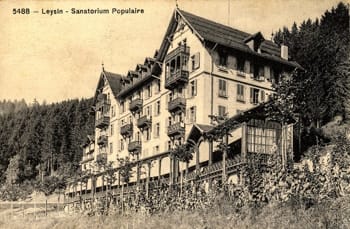
Maria Elena Vieira da Silva was the only child of prosperous parents. Her father was a diplomat; her mother the daughter of the founder of Lisbon's most important newspaper, O Século. Sadly, when she was still a baby, her father contracted tuberculosis, and the family moved to Leysin, Switzerland, where they resided at a sanatorium for six months. Her first memories were of their time there. In 1911, when she was just three years old, her father's treatment failed and he passed away. Maria and her mother moved back to Lisbon where they lived with her maternal grandfather.
Vieira da Silva was tutored privately at home. This meant that she was isolated from other children and grew up almost exclusively in the company of adults. She loved reading books, listening to music, and painting. When Vieira da Silva was five, she traveled to England for two months with her grandmother and her aunt Beatriz. During this trip, she visited museums for the first time, and also attended a play, Shakespeare's A Midsummer Night's Dream, at the Hastings Casino. These experiences deepened her love for the arts and once back in Lisbon, she attended several performances of the Ballets Russes. She later said of her upbringing, "I was living in a world of youthful and entertaining grownups. I listened to their conversations. [...] I took refuge in the world of colours, the world of sounds ... I think that all merged into one for me".
Education and Early Training
When she was eleven, Vieira da Silva began eight years of formal artistic training (producing her first oil paintings at age thirteen). She studied drawing and painting under Portuguese painter Emília dos Santos Braga, and, at the Academia de Belas Artes in Lisbon, under painter and art historian Armando Lucena. During her last academic year, she also took anatomy classes at the Lisbon School of Medicine.
In 1928, a twenty-year-old Vieira da Silva left Lisbon for Paris, accompanied by her mother. They lived in the 14th arrondissement, at the Médical Hôtel, a curious space that combined apartments, art studios, medical rooms, and even a boxing ring. She said of the city, "People used to set off from the port of Lisbon to discover the world and inhabit it. In Paris, you can discover the world right here at any moment through spiritual means. Paris, in return, inhabits the space with its creations".
Within weeks of arriving in Paris, Vieira da Silva had participated in a group event at the Grand Palais, and exhibited a charcoal self-portrait at the 1928 Salon. She undertook a short tour of Italy where she was inspired by the Italian Futurists, and the frescoes of Sienese Gothic painter, Pietro Lorenzetti. Once back in Paris, she studied the old masters on display at the Louvre ( "it was classical art that opened me up to modern art", she once said) as well as the colorful tablecloth designs of Post-Impressionist artist Pierre Bonnard. She also greatly admired the works of the Post-Impressionists, especially Paul Cézanne and his famous 1894-95 painting The Card Players.
Still intent on becoming a sculptor, Vieira da Silva enrolled in the Académie de la Grande Chaumière, where she studied under Antoine Bourdelle (a former pupil of Auguste Rodin), and Charles Despiau. It was at the Académie that she befriended French sculptor Germaine Richier, and Swiss artist Alberto Giacometti. She also met Hungarian painter Árpád Szenes, her future husband, at the Académie.
By the time of Bourdelle's death in 1929, Vieira da Silva's focus had shifted from sculpture to painting. She put this down to an encounter with a portrait by Pablo Picasso, which she referred to as "my first shock" on arriving in Paris, and which gave her "a more humane, more direct notion" of what painting was (or could be). She duly enrolled at the Académie Scandinave where she studied painting under Charles Dufresne, Henry de Waroquier, and Othon Friesz, and engraving under the English artist, Stanley William Hayter. She attended additional classes at the Académie Colarossi (a "free academy" which was the primary "rival" of the Académie de la Grande Chaumière) run by Fernand Léger, and at the Académie Ranson under stained-glass window designer, Roger Bissière.
In February 1930, by which time Vieira da Silva was exhibiting her paintings in Paris, Vieira da Silva and Szenes were married. After honeymooning in Hungary and Transylvania, the couple moved to 8 bis Villa des Camélias in the 14th arrondissement. The couple maintained individual studios in the building. Later, in 1938, the couple would move to a new studio above a cardboard box manufacturer at 51 Boulevard Saint-Jacques in the 13th arrondissement. Their neighbor was the French abstract painter, Jean Degottex.
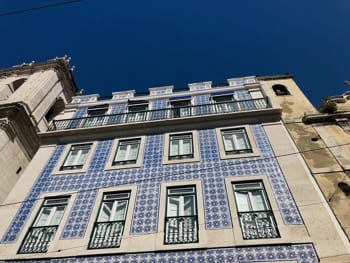
According to London's Waddington Custot Gallery, "Living in Paris, [Vieira da Silva] absorbed a variety of influences, from the geometric abstraction of the group Cercle et Carré (Circle and Square, 1929-33) and Joaquín Torres-García, to avant-garde Cubism. Vieira da Silva began to paint rectangular patches of colour to recall the Hispano-Arabic Azulejo tiles, undulating cobbled pavements and tiered architecture of Lisbon". At the same time, she immersed herself in Paris' vibrant art scene, participating, for instance, in lively debates about the relative merits of abstraction and realism at artists' meetings in local cafés.
In the spring of 1931, Vieira da Silva took a trip to Marseilles. She had a view of the old port from her hotel room, and was inspired to make several studies of the old ferry bridge. Back in Paris, she developed these sketches into a painting. It was a decisive moment in her career; the point at which she aligned herself more self-consciously with abstraction. Art historian Lydia Harambourg explains that "This is where her inner journey began, which may be compared to a reverie. Through a visual universe composed of silence and light, she developed a graphic architecture subject to the laws of gravity and to the three dimensions, in which space increased or decreased, and which only emphasised an attraction to emptiness".
In May 1931, Vieira da Silva participated in two major Paris art fairs: the Salon d'Automne and the Salon des Surindépendants. These were followed in 1933 by her first solo exhibition at the Galerie Jeanne Bucher (in Paris) which featured book illustrations and paintings. Bucher became one of her closest friends, and the gallery continued to be her primary dealer throughout her career. Said the gallery, "Few artists have had, in the course of the last century, a destiny as intimately linked to a gallery as that which Vieira da Silva knew with the Jeanne Bucher Jaeger Gallery". Indeed, Bucher played a significant role in promoting da Silva abroad and helped in getting her works into major institutions such as the Museum of Modern Art (MoMA) in New York.
Mature Period
When World War II broke out in 1939, Vieira da Silva and Szenes, a Hungarian Jew, decided to leave France. They left their studio in the care of Bucher, who allowed artists in difficult circumstances, like Russian-French painter Nicolas de Staël, to stay there. The couple moved first to Lisbon, where they were (re)married in a religious ceremony at the Church of São Sebastião on November 15, 1939. Soon after, Szenes who had converted from Judaism to Catholicism, was baptized.
After just one year in Lisbon, the couple, still fearing for their safety, decided to leave. Vieira da Silva's Portuguese citizenship had (before Szenes's conversion to Catholicism) been revoked due to her marriage to a Jewish man so the couple took the decision to move to Rio de Janeiro, Brazil, (traveling there on documents issued by the League of Nations). They would live there in exile for the next seven years. Though they struggled financially, the couple managed to scrape a living through sales of their art. They received some portrait commissions, and Vieira da Silva began painting vases, plates, tiles, and other utilitarian objects. They befriended several artists and intellectuals, such as Brazilian writers Murilo Mendes and Cecília Meireles.
With Mendes's help, Vieira da Silva secured an exhibition at the Museu Nacional de Belas Artes in Rio de Janeiro in 1942 (her first ever museum show). Later that year, her work was exhibited at the National Salon of Fine Arts (also in Rio). In 1943, she received a commission from the College of Agriculture at the Federal University of Rio de Janeiro, to create an artwork for the school restaurant and followed, in 1944, with a solo exhibition at Rio's Galeria Askanazy. Responses to the show were mixed, and the country in general was slow to warm to abstract art. Nevertheless, art historian Delfim Sardo observes that "Vieira da Silva helped change "the nature of Brazilian art, in the sense that her approach to space, which had been greatly influenced by Joaquín Torres-Garcia [...] would become a fundamental pole for the later development of Brazilian neo-concretism, which then became dominant in the following decade". (Adolpho Leirner of The Museum of Fine Arts, Houston, explains that Neo-Concretism was a reaction against the "excessive rationalism of Concrete art", by emphasizing the "subjectivity and the experience of both real time and space".)
In 1947, Vieira da Silva and Szenes returned to France and moved back into the studio they had left behind eight years earlier. They remained in Paris for the rest of their lives. Vieira da Silva (while continuing to work with Bucher) met art dealer Pierre Loeb, founder of the Galerie Pierre, who would also play an important role in promoting her art. It was around this time that the French government began purchasing some of Vieira da Silva's works, such as La partie d'échecs (The Chess Game) (1943) (now housed in the collection of the Centre Pompidou).
In the early 1950s, Vieira da Silva and Szenes asked their friend, the art critic Guy Wheelen, to start managing their works and archives. Throughout the 1950s, in addition to her paintings, which were dark reflections on life in post-war Europe, Vieira da Silva produced several book illustrations. She also produced tapestry work from the early 1950s (through to the early 1970s) and even won a 1954 tapestry competition for the University of Basel. In 1956 Vieira da Silva and Szenes were granted French citizenship and moved to 34 Rue de l'Abbé-Carton in the 14th arrondissement, to a house they had built on a plot of land they had purchased. The couple again took individual studios and Vieira da Silva's mother moved in permanently with the couple (she lived with them for the remainder of her life). In the late 1960s, the couple purchased a second home in Yèvre-le-Châtel in the Loire region of France.
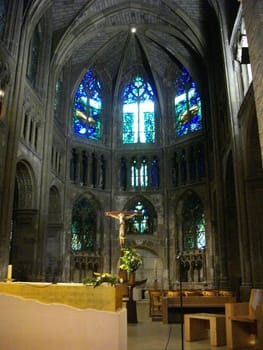
Vieira da Silva took her first trip to the United States in 1961 to promote her exhibitions at the Knoedler Gallery in New York and the Duncan Phillips Collection in Washington D.C. Also in 1961, she was the guest of honor at the 6th São Paolo Biennale where she received the Biennale's International Grand Prize for Painting. Adding to a growing list of honors, she became the first woman to receive the French government's Grand Prix National des Arts in 1966. In the mid-1960s, she ventured in stained glass window design, and produced eight windows for a medieval parish church in the town of Reims. In 1966 she and Szenes returned to the United States, visiting New York and Arizona before continuing on to Mexico.
Late Period and Death
Vieira da Silva continued to work and exhibit internationally throughout the 1970s and 1980s.
Commenting on her early 1970s paintings, New York's Di Donna Gallery writes, "[Her] fractured representation of reality creates a psychological space that captures how the mind recalls and restructures memory, referring to not only her life in Paris, but to the sensory experiences of her youth in Lisbon, famous for its streets of captivating tiles. In Le Jardin d'ipomée, c. 1974 [for example] Vieira da Silva depicted a garden of cobalt morning glories, a flower native to Portugal. Using the texture of the handwoven paper to guide her brushstrokes, Vieira da Silva blended pops of lilac and emerald into the concentration of blue buds".
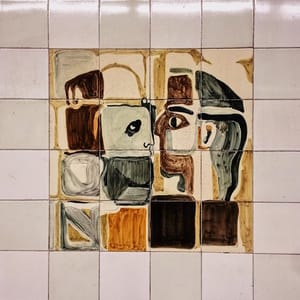
Vieira da Silva received a commission in 1981 from the French Ministry of Culture and the Ministry of Foreign Affairs to decorate the chapel adjoining the Palacio de Santos, which was the headquarters of the French Embassy in Lisbon. Two years later she accepted a commission from the Lisbon Metropolitan Company to create the decorative tiles for the Cidade Universitária metro station. In January1985 Szene passed away.
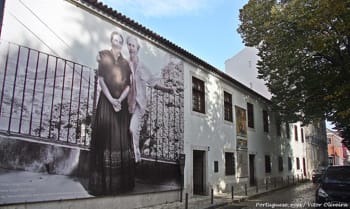
Vieira da Silva, who never had children, died in Paris on March 6, 1992. She was buried in the cemetery of Yèvre-le-Châtel, next to her mother and husband. The Portuguese president, Mário Soares, attended her funeral. In 1993, the Avenue Maria-Helena Vieira da Silva in Lisbon was named in her honor and, in November 1994, the Árpád Szenes-Vieira da Silva Foundation was inaugurated in Lisbon. The museum houses a large collection of works by Vieira da Silva and Szenes. A crater on the planet Mercury was also named after her in 2013.
The Legacy of Maria Helena Vieira da Silva
Vieira da Silva was one of the most successful female artists working and exhibiting in post-war Europe. Although she lost her citizenship, she is today considered by the Portuguese people to be, what art historian Delfim Sardo calls "a homebased painter", whose work was firmly rooted in her early experiences of growing up in Lisbon. Her influence can be traced in emerging post-war movements in Europe, and also in Brazil. In the latter she inspired the "daring innovations" of leading figures within the Neo-Concretism movement of the 1950s, namely Lygia Pape, Willys de Castro, and Hércules Barsotti.
The Di Donna Gallery says of her achievements in Europe: "Historically, scholarship has emphasized the role of American artists in the development of post-World War II abstraction with the emergence of movements such as Abstract Expressionism and Color Field painting. Artists active in Europe following the war, however, played an equally central role in the progression of abstraction, practicing gestural forms of expression across movements including Art Informel and Tachisme. Working in a pivotal moment within the modernist canon, Vieira da Silva forged a unique path forward for the legacy of abstraction in Europe and globally - one in which abstract forms and structures unite with lived experience in the creation of a new form of subjective vision".
Influences and Connections

-
![Pablo Picasso]() Pablo Picasso
Pablo Picasso -
![Fernand Léger]() Fernand Léger
Fernand Léger -
![Paul Cézanne]() Paul Cézanne
Paul Cézanne - Antoine Bourdelle
- Stanley William Hayter
-
![Alberto Giacometti]() Alberto Giacometti
Alberto Giacometti - Murilo Mendes
- Germaine Richier
- Jean Degottex
- Joaquín Torres García
-
![Lygia Clark]() Lygia Clark
Lygia Clark - Emily Speed
- Lygia Pape
- Willys de Castro
- Hércules Barsotti
-
![Alberto Giacometti]() Alberto Giacometti
Alberto Giacometti - Murilo Mendes
- Germaine Richier
- Jean Degottex
- Joaquín Torres García
-
![Art Informel]() Art Informel
Art Informel -
![Abstract Expressionism]() Abstract Expressionism
Abstract Expressionism - Neo-Concretism
 Ask The Art Story AI
Ask The Art Story AI


















